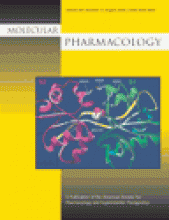Abstract
The interaction of an agonist with its receptor can be characterized by two fundamental properties, affinity and efficacy. Affinity defines how tightly the agonist associates with its receptor, and efficacy measures the ability of the bound ligand to activate the receptor. Although affinity and efficacy are independent properties, the binding and activation processes that they describe are tightly coupled. This strong coupling has complicated the interpretation of concentration-response phenotypes caused by receptor mutations. We present an approach that quantifies the role of individual amino acids in defining affinity and efficacy. This method, which employs partial agonists and covalent modification of introduced cysteines, was applied to the ligand-binding sites of the NMDA receptor. Recent crystallographic structures for glutamate receptor ligand-binding cores allowed identification of residues that are either known or are predicted to be critical for ligand binding in the NR1 and NR2A subunit, respectively. Mutation of amino acids whose sidechains would directly coordinate bound ligands affected both agonist affinity and efficacy. In contrast, positions predicted to stabilize the closed-cleft conformation contributed only to agonist efficacy. The results provide a molecular basis for the tight coupling of agonist binding and receptor activation.
- Received October 17, 2003.
- Accepted April 26, 2004.
- The American Society for Pharmacology and Experimental Therapeutics
MolPharm articles become freely available 12 months after publication, and remain freely available for 5 years.Non-open access articles that fall outside this five year window are available only to institutional subscribers and current ASPET members, or through the article purchase feature at the bottom of the page.
|






